Features
Socialism with Chinese characteristics for the new area
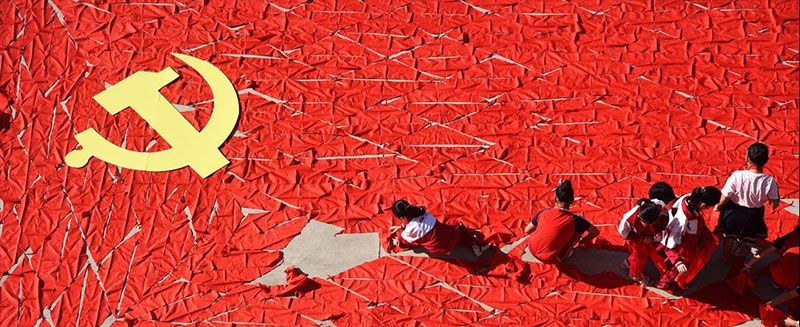
During my visit to China for the Second Global South Think Tank Dialogue, I frequently encountered the phrase “Socialism with Chinese Characteristics for the New Era.” This concept has been central to China’s governance and economic strategy, driving its transformation into the world’s second-largest economy. While many nations that adopted communism as a political ideology have struggled with stagnation and inefficiency, China’s unique approach to socialism has facilitated industrialization, poverty alleviation, and large-scale infrastructure development at an unprecedented pace.
At Marga Institute, our focus is to critically examine development models that best align with Sri Lanka’s economic, social, and political realities. As a research organization and think tank, we analyze development through multiple lenses—economic, social, political, environmental, and value-based. It was this interdisciplinary approach that heightened my curiosity when I attended a presentation on President Xi Jinping’s thought on Socialism with Chinese Characteristics for a New Era at the Party School of the Communist Party of China in Nanning City, Guangxi Province.
This article does not seek to advocate for communism or socialism, nor does it claim expertise in political science or geopolitics. Instead, it aims to explore how political structures impact development and how the Chinese Communist Party (CCP) has been organized to meet the nation’s evolving socio-economic needs.
Key Questions for Sri Lanka’s Development Trajectory
From a research perspective, China’s governance model raises several critical questions for Sri Lanka:
· Given Sri Lanka’s economic challenges and welfare-driven state structure, what aspects of socialism could be adapted to achieve a minimum of 5% GDP growth and overcome the economic crisis?
· What reforms are needed in Sri Lanka’s planning mechanisms to drive sustainable, long-term economic growth?
· How should the current ruling party, National People’s Power, be structured to effectively address development needs?
While this article does not focus on the structural aspects of the Chinese Communist Party or how Sri Lankan political parties could adapt similar models, it aims to shed light on the first two research questions—how economic planning and development strategies can be better structured in Sri Lanka.
Understanding Socialism with Chinese Characteristics
During my time in China, I engaged in discussions with Chinese academics and officials, as well as representatives from universities and think tanks across the Global South—including Bangladesh, Georgia, Tajikistan, Indonesia, Myanmar, Malaysia, Nepal, Pakistan, and Vietnam. Based on these conversations, here’s my understanding of Socialism with Chinese Characteristics and its role in China’s development success.
Key Features of Socialism with Chinese Characteristics
1. A Market-Driven Economy with State Oversight
Unlike traditional socialist economies that rely entirely on state control, China follows a “socialist market economy”—a hybrid model that allows both state intervention and market-driven growth.
State-Owned Enterprises (SOEs) dominate key sectors such as energy, finance, and infrastructure, but private businesses, foreign investment, and competition are encouraged.
A dual-track approach ensures that both government planning and market forces shape economic progress.
2. The Communist Party as the Central Authority
The CCP remains the core of political, economic, and social decision-making, ensuring long-term stability and continuity.
Unlike multiparty democracies, where frequent government changes can disrupt policies, China’s centralized leadership enables consistent economic planning.
Political reforms are gradual and carefully managed to prevent instability rather than allowing rapid democratization.
3. Pragmatic & Gradual Economic Reform
Deng Xiaoping’s “Reform and Opening-Up” introduced foreign investments, economic liberalization, and Special Economic Zones (SEZs) to drive growth.
Unlike the Soviet model, which relied on rigid central planning, China tested economic reforms regionally before scaling them up nationwide.
Policy decisions are practical and results-oriented, focused on economic success rather than ideological rigidity.
4. State-Led Development & Long-Term Planning
China’s Five-Year Plans set clear economic and social priorities, ensuring predictability and structured growth.
Heavy investments in infrastructure, technology, and education have fueled modernization and global competitiveness.
Urbanization and industrialization are state-managed to balance economic growth with social stability.
5. A Focus on Poverty Reduction & Social Welfare
China claims that it has successfully lifted over 800 million people out of poverty—one of the largest poverty alleviation efforts in history.
Unlike Western welfare models, China’s system prioritizes job creation, rural development, and regional economic balancing over direct cash assistance.
The goal is to build a “moderately prosperous society” ensuring economic development and social welfare go hand in hand.
6. Nationalism & Cultural Identity as Unifying Forces
Confucian values—such as social harmony, collective responsibility, and respect for authority—shape China’s governance and economic policies.
Economic success is tied to national pride, strengthening public support for the CCP’s leadership.
Initiatives like the Belt and Road Initiative (BRI) highlight China’s global ambitions while reinforcing sovereignty.
7. Stability Over Western-Style Democracy
China rejects Western liberal democracy, arguing that rapid political shifts could lead to instability and economic stagnation—as seen in the collapse of the Soviet Union.
Political dissent is tightly controlled through censorship, surveillance, and regulation of civil society to maintain social order.
The emphasis remains on economic growth, social harmony, and centralized decision-making, rather than multiparty governance.
What Sri Lanka may adapt from China’s example
China’s development strategy has leveraged its geographical advantages, modernized agriculture and industry, improved transport and port infrastructure, expanded e-commerce, and pursued green, bio-friendly food production. The broader goal has been to build a healthy, prosperous nation through long-term strategic planning and state-led development initiatives.
While China’s model cannot be wholesale replicated in Sri Lanka, there are key aspects in planning, governance, and economic strategy that merit further exploration. Sri Lanka’s challenge lies in balancing state-led development with economic liberalization, ensuring policies are both practical and sustainable.
China’s approach to socialism has defied conventional expectations. While many traditional socialist economies have struggled, China has strategically combined state intervention with market mechanisms—leading to rapid economic growth and global influence. This model raises important questions for Sri Lanka’s long-term planning, particularly in the context of its current financial crisis and development challenges.
As Sri Lanka navigates a critical period of economic uncertainty, understanding different governance and economic models is essential. By studying China’s development path, alongside global best practices, Sri Lanka can identify sustainable solutions that align with its unique socio-economic landscape—fostering inclusive and long-term economic growth.
While China’s centralized system enables swift decision-making and implementation, it leaves little room for dissent. In contrast, Sri Lanka’s democratic framework allows for debate and opposition, but this often results in prolonged delays in executing critical economic policies. Protests and political resistance have frequently obstructed reforms that could have propelled the country forward—whether it be the introduction of private universities to expand higher education opportunities or the now-abandoned Light Rail Transit (LRT) project that promised to revolutionize urban transport.
The question remains: Are these challenges simply a reflection of Sri Lanka’s political culture, or do external geopolitical factors play a role in fueling instability? Unlike China, Sri Lanka does not have a single-party hierarchy that can push through reforms without resistance. However, this also means that space for public discourse and criticism remains intact. The challenge for Sri Lanka is to strike a balance—ensuring that necessary reforms can be implemented efficiently while upholding democratic principles and public accountability.
Executive Vice Chairman- Marga Institute
Features
South’s ‘structural deficiencies’ and the onset of crippled growth
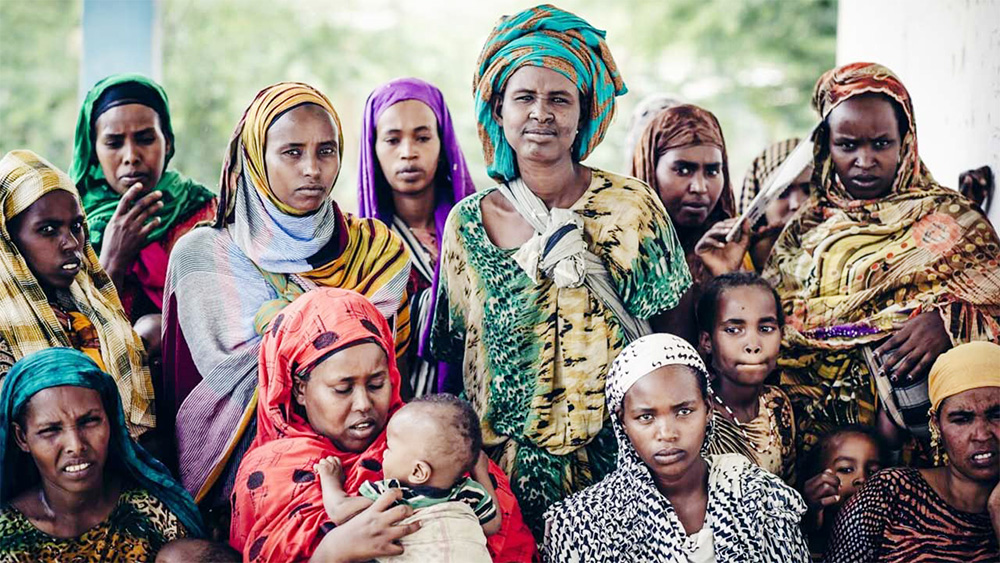
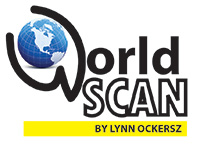 The perceptive commentator seeking to make some sense of social and economic developments within most Southern countries today has no choice but to revisit, as it were, that classic on post-colonial societies, ‘The Wretched of the Earth’ by Frantz Fanon. Decades after the South’s initial decolonization experience this work by the Algerian political scientist of repute remains profoundly relevant.
The perceptive commentator seeking to make some sense of social and economic developments within most Southern countries today has no choice but to revisit, as it were, that classic on post-colonial societies, ‘The Wretched of the Earth’ by Frantz Fanon. Decades after the South’s initial decolonization experience this work by the Algerian political scientist of repute remains profoundly relevant.
The fact that the Algeria of today is seeking accountability from its former colonizer, France, for the injustices visited on it during the decades of colonial rule enhances the value and continuing topicality of Frantz’s thinking and findings. The fact that the majority of the people of most decolonized states are continuing to be disempowered and deprived of development should doubly underline the significance of ‘The Wretched of the Earth’ as a landmark in the discourse on Southern questions. The world would be erring badly if it dismisses this evergreen on decolonization and its pains as in any way outdated.
Developments in contemporary China help to throw into relief some of the internal ‘structural deficiencies’ that have come to characterize most Southern societies in current times. However, these and many more ‘structural faults’ came to the attention of the likes of Fanon decades back.
It is with considerable reservations on their truthfulness that a commentator would need to read reports from the US’ Office of the Director of National Intelligence (ODNI) on developments in China, but one cannot approach with the same skepticism revelations on China by well-known media institutions such as Bloomberg News.
While an ODNI report quoted in this newspaper on March 25th, 2025, elaborated on the vast wealth believed to have been amassed by China’s contemporary rulers and their families over the years, Bloomberg News in a more studied manner said in 2012, among other things, on the same subject that, ‘Xi’s extended family had amassed assets totaling approximately $376 million, encompassing investments in sectors like rare earth minerals and real estate. However, no direct links were established between these assets and Xi or his immediate family.’
Such processes that are said to have taken hold in China in post- Mao times in particular are more or less true of most former colonies of the South. A clear case in point is Sri Lanka. More than 75 years into ‘independence’ the latter is yet to bring to book those sections of its ruling class that have grown enormously rich on ill-gotten gains. It seems that, as matters stand, these sections would never be held accountable for their unbounded financial avarice.
The mentioned processes of exploitation of a country’s wealth, explain in considerable measure, the continuing underdevelopment of the South. However, Fanon foresaw all these ills and more about the South long ago. In ‘The Wretched of the Earth’ he speaks insightfully about the ruling classes of the decolonized world, who, having got into the boots of the departing colonizers, left no stone unturned to appropriate the wealth of their countries by devious means and thereby grow into the stratum described as ‘the stinking rich.’
This is another dimension to the process referred to as ‘the development of underdevelopment.’ The process could also be described as ‘How the Other Half Dies’. The latter is the title of another evergreen piece of research of the seventies on the South’s development debacles by reputed researcher Susan George.
Now that the Non-aligned Movement is receiving some attention locally it would be apt to revisit as it were these development debacles that are continuing to bedevil the South. Among other things, NAM emerged as a voice of the world’s poor. In fact in the seventies it was referred to as ‘The trade union of the poor.’ Accordingly, it had a strong developmental focus.
Besides the traditional aims of NAM, such as the need for the South to keep an ‘equidistance’ between the superpowers in the conduct of its affairs, the ruling strata of developing countries were also expected to deliver to their peoples equitable development. This was a foremost dimension in the liberation of the South. That is, economic growth needed to be accompanied by re-distributive justice. In the absence of these key conditions no development could be said to have occurred.
Basing ourselves on these yardsticks of development, it could be said that Southern rulers have failed their peoples right through these decades of decolonization. Those countries which have claimed to be socialistic or centrally planned should come in for the harshest criticism. Accordingly, a central aim of NAM has gone largely unachieved.
It does not follow from the foregoing that NAM has failed completely. It is just that those who have been charged with achieving NAM’s central aims have allowed the Movement to go into decline. All evidence points to the fact that they have allowed themselves to be carried away by the elusive charms of the market economy, which three decades ago, came to be favoured over central planning as an essential of development by the South’s ruling strata.
However, now with the returning to power in the US of Donald Trump and the political Right, the affairs of the South could, in a sense, be described as having come full circle. The downgrading of USAID, for instance, and the consequent scaling down of numerous forms of assistance to the South could be expected to aggravate the development ills of the hemisphere. For instance, the latter would need to brace for stepped-up unemployment, poverty and social discontent.
The South could be said to have arrived at a juncture where it would need to seek ways of collectively advancing its best interests once again with little or no dependence on external assistance. Now is the time for Southern organizations such as NAM to come to the forefront of the affairs of the South. Sheer necessity should compel the hemisphere to think and act collectively.
Accordingly, the possibility of South-South cooperation should be explored anew and the relevant institutional and policy framework needs to be created to take on the relevant challenges.
It is not the case that these challenges ceased to exist over the past few decades. Rather it is a case of these obligations being ignored by the South’s ruling strata in the belief that externally imposed solutions to the South’s development questions would prove successful. Besides, these classes were governed by self- interest.
It is pressure by the people that would enable their rulers to see the error of their ways. An obligation is cast on social democratic forces or the Centre-Left to come to center stage and take on this challenge of raising the political awareness of the people.
Features
Pilot error?
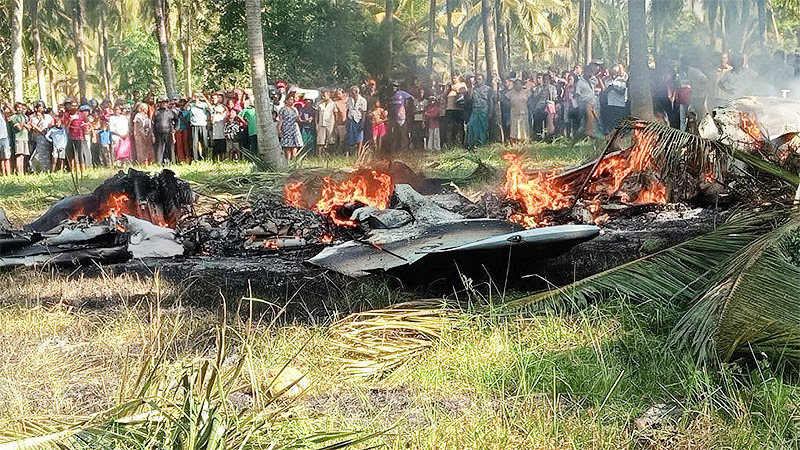
On the morning of 21 March, 2025, a Chinese-built K-8 jet trainer aircraft of the Sri Lanka Air Force (SLAF) crashed at Wariyapola. Fortunately, the two pilots ejected from the aircraft and parachuted down to safety.
A team of seven has been appointed to investigate the accident. Their task is to find the ‘cause behind the cause’, or the root cause. Ejecting from an aircraft usually has physical and psychological repercussions. The crew involved in the crash are the best witnesses, and they must be well rested and ready for the accident inquiry. It is vital that a non-punitive atmosphere must prevail. If the pilots believe that they are under threat of punishment, they will try to withhold vital information and not reveal the truth behind what happened, prompting their decision to abandon the stricken aircraft. In the interest of fairness, the crew must have a professional colleague to represent them at the Inquiry.
2000 years ago, the Roman philosopher Cicero said that “To err is human.” Alexander Pope said, “To err is human. To forgive, divine.” Yet in a Royal Air Force (RAF) hangar in the UK Force (RAF) hangs a sign declaring: “To err is human. To forgive is not RAF policy” These are the two extremes.
Over the years, behavioural scientists have observed that errors and intelligence are two sides of the same coin. In other words, an intelligent human being is liable to make errors. They went on to label these acts of omission and commission as ‘Slips, Lapses, Mistakes and Violations’.
To illustrate the point in a motoring context, if one was restricted to driving at a speed limit of 100 kph along an expressway and the speed crept up to 120 kph, then it is a ‘Slip’ on one’s part. If you forgot to fasten the seatbelt, it is a ‘Lapse’. While driving along a two-lane road, if a driver thinks in his/her judgement that the way is clear and tries to overtake slower traffic on the road, using the opposite lane, then encounters unanticipated opposite traffic and is forced to get back to the correct lane, that is a ‘Mistake’. Finally, if a double line is crossed while overtaking, while aware that the law is being broken, that is labelled as a ‘Violation’. In theory, all of the above could be applied to flying as well.
In the mid-Seventies, Elwyn Edwards and Frank Hawkins proposed that good interaction between Software (paperwork), Hardware (the aircraft and other machines), Liveware (human element) and the (working) environment are the essentials in safe flight operations. Labelled the ‘SHELL’ concept, it was adopted by the International Civil Aviation Organisation. (ICAO). (See Diagram 01)

In diagram 01, two ‘L’s depict the ‘Liveware’, inside and outside an aircraft flightdeck. The ‘L’ at the centre is the pilot in command (PIC), who should know his/her strengths and weaknesses, know the same of his/her crew, aircraft, and their mission, and, above all, be continuously evaluating the risks.
Finally, Prof. James Reason proposed the Swiss Cheese Theory of Accident Causation. (See Diagram 02)
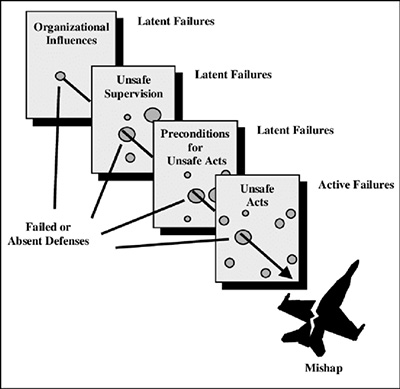
From this diagram we see that built in defences in a system are like slices of Swiss cheese. There are pre-existing holes at random which, unfortunately, may align and allow the crew at the ‘sharp end’ to carry out a procedure unchecked.
Although it is easy and self-satisfying to blame a crew, or an individual, at an official accident investigation, what should be asked, instead, is why or how the system failed them? Furthermore, a ‘just culture’ must prevail.
The PIC and crew are the last line of defence in air safety and accident prevention. (See Diagram 3)

A daily newspaper reported that it is now left to be seen whether the crash on 21 March was due to mechanical failure or pilot error. Why is it that when a judge makes a wrong judgement it is termed ‘Miscarriage of Justice’ or when a Surgeon loses a patient on the operating table it is ‘Surgical Misadventure’, but when a pilot makes an honest error, it is called ‘Pilot Error’? I believe it should be termed ‘Human Condition’.
Even before the accident investigation had started, on 23 March, 2025, Minister of Civil Aviation, Bimal Ratnayake, went on record saying that the Ministry of Defence had told him the accident was due to an ‘athweradda’ (error). This kind of premature declaration is a definite ‘no-no’ and breach of protocol. The Minister should not be pre-empting the accident enquiry’s findings and commenting on a subject not under his purview. Everyone concerned should wait for the accident report from the SLAF expert panel before commenting.
God bless the PIC and crew!
– Ad Astrian
Features
Thai scene … in Colombo!
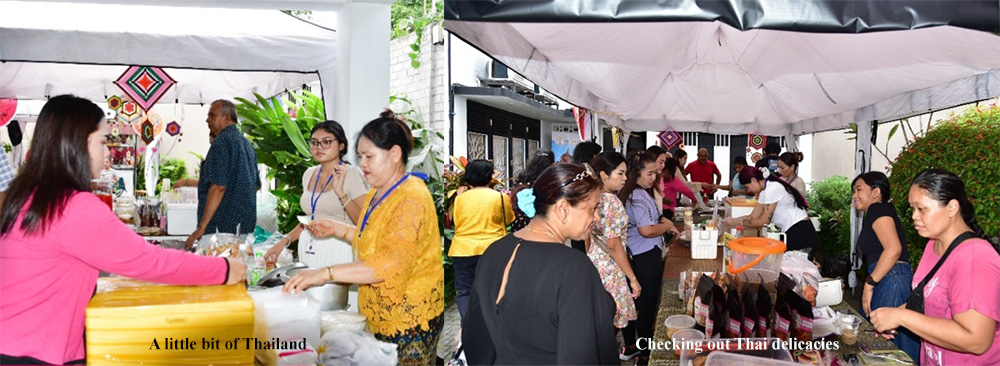
 Yes, it’s happening tomorrow, Friday (28th), and Saturday (29th,) and what makes this scene extra special is that you don’t need to rush and pack your travelling bags and fork out a tidy sum for your airfare to Thailand.
Yes, it’s happening tomorrow, Friday (28th), and Saturday (29th,) and what makes this scene extra special is that you don’t need to rush and pack your travelling bags and fork out a tidy sum for your airfare to Thailand.
The Thai Street Food Festival, taking place at Siam Nivasa, 43, Dr. CWW Kannangara Mawatha, Colombo 7, will not only give you a taste of Thai delicacies but also Thai culture, Thai music, and Thai dancing.
 This event is being organised by the Thai Community, in Sri Lanka, in collaboration with the Royal Thai Embassy in Colombo.
This event is being organised by the Thai Community, in Sri Lanka, in collaboration with the Royal Thai Embassy in Colombo.
The Thai Community has been very active and they make every effort to promote Amazing Thailand, to Sri Lankans, in every possible way they can.
Regarding the happening, taking place tomorrow, and on Saturday, they say they are thrilled to give Sri Lankans the vibrant Thai Street Food Festival.
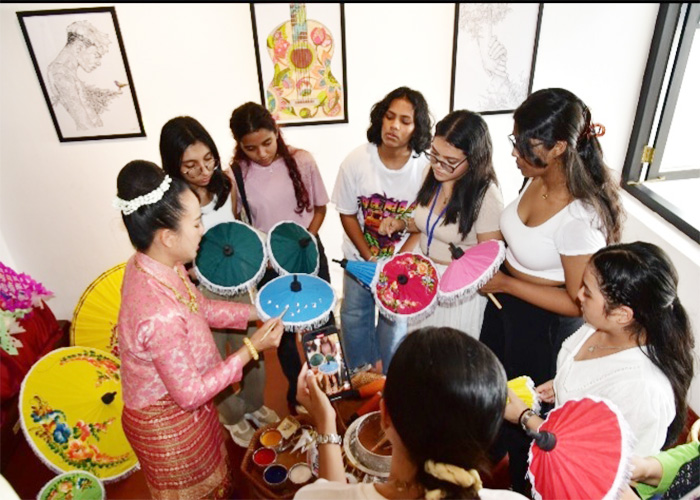
Explaining how Thai souvenirs are turned out
I’m told that his event is part of a series of activities, put together by the Royal Thai Embassy, to commemorate 70 years of diplomatic relations between Thailand and Sri Lanka.
At the Thai Street Food Festival, starting at 5.00 pm., you could immerse yourself in lively Thai culture, savour delicious Thai dishes, prepared by Colombo’s top-notch restaurants, enjoy live music, captivate dance performances, and explore Thai Community members offering a feast of food and beverages … all connected with Amazing Thailand.
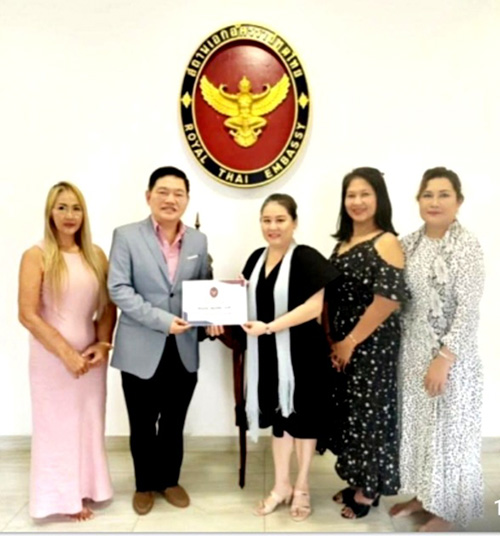
Some of the EXCO members of the Thai Community, in Sri Lanka,
with the Ambassador for Thailand
I’m sure most of my readers would have been to Thailand (I’ve been there 24 times) and experienced what Amazing Thailand has to offer visitors … cultural richness, culinary delights and unique experiences.
Well, if you haven’t been to Thailand, as yet, this is the opportunity for you to experience a little bit of Thailand … right here in Colombo; and for those who have experienced the real Thailand, the Thai Street Food Festival will bring back those happy times … all over again!
Remember, ENTRANCE IS FREE.
-
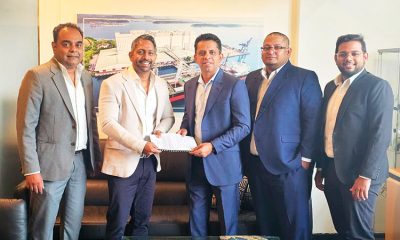
 Business6 days ago
Business6 days agoCargoserv Shipping partners Prima Ceylon & onboards Nestlé Lanka for landmark rail logistics initiative
-
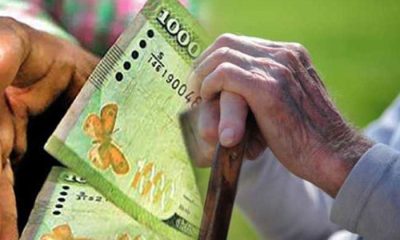
 News4 days ago
News4 days agoSeniors welcome three percent increase in deposit rates
-

 Features4 days ago
Features4 days agoThe US, Israel, Palestine, and Mahmoud Khalil
-

 Business6 days ago
Business6 days agoSri Lankans Vote Dialog as the Telecommunication Brand and Service Brand of the Year
-
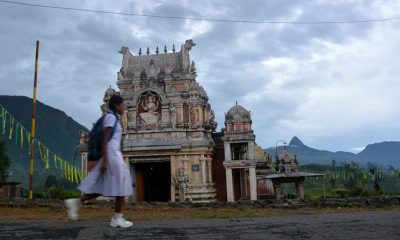
 News4 days ago
News4 days agoScholarships for children of estate workers now open
-
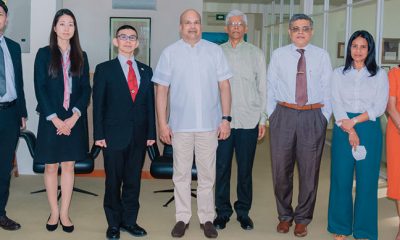
 News5 days ago
News5 days agoDefence Ministry of Japan Delegation visits Pathfinder Foundation
-

 Features6 days ago
Features6 days agoThe Vaping Veil: Unmasking the dangers of E-Cigarettes
-
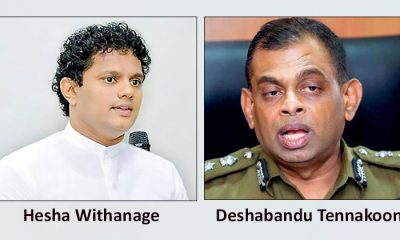
 News6 days ago
News6 days ago‘Deshabandu is on SLC payroll’; Hesha tables documents

